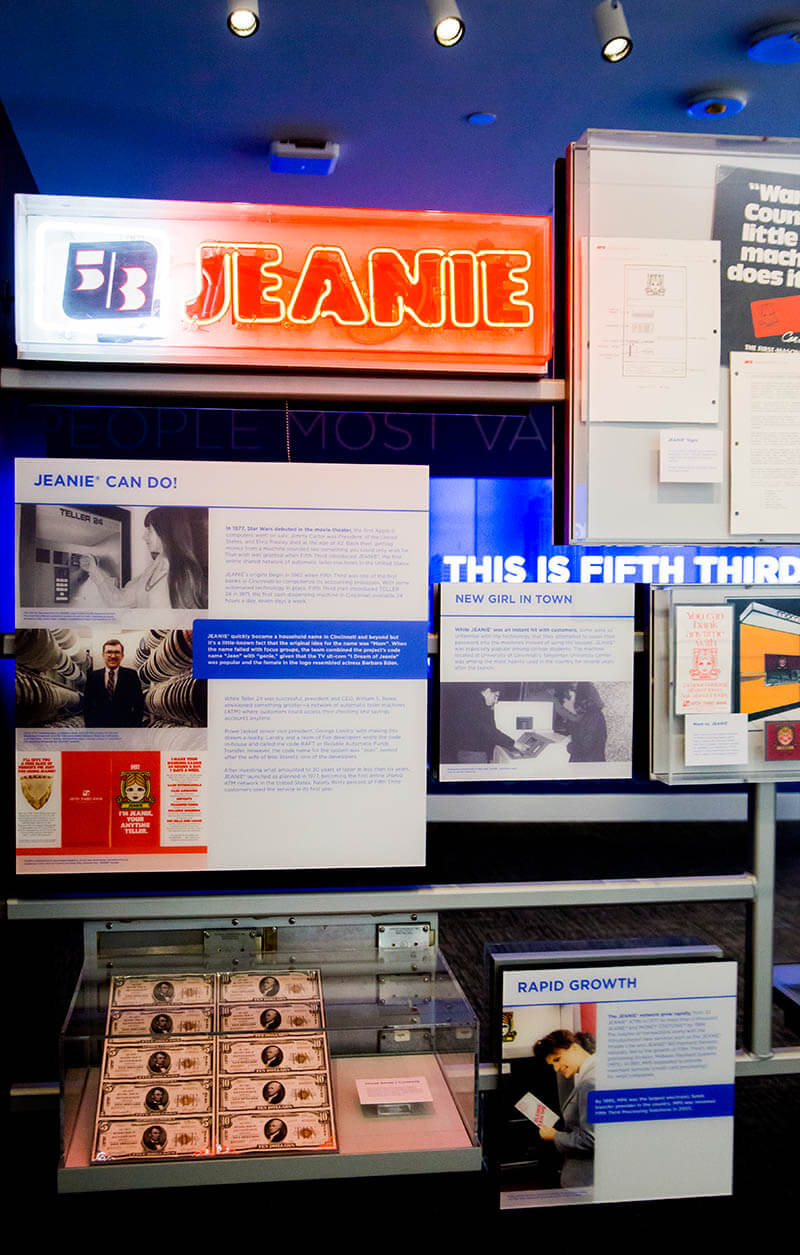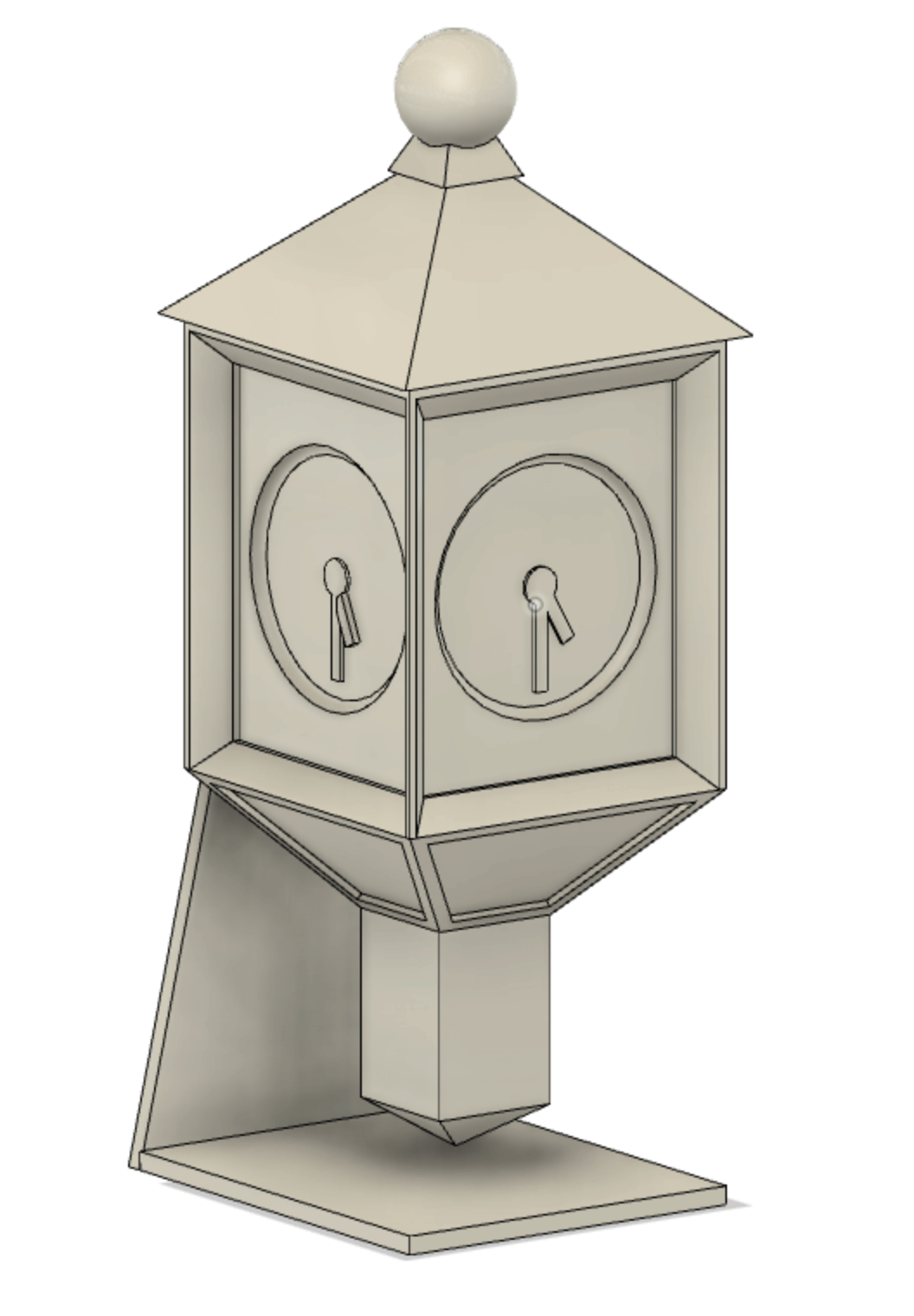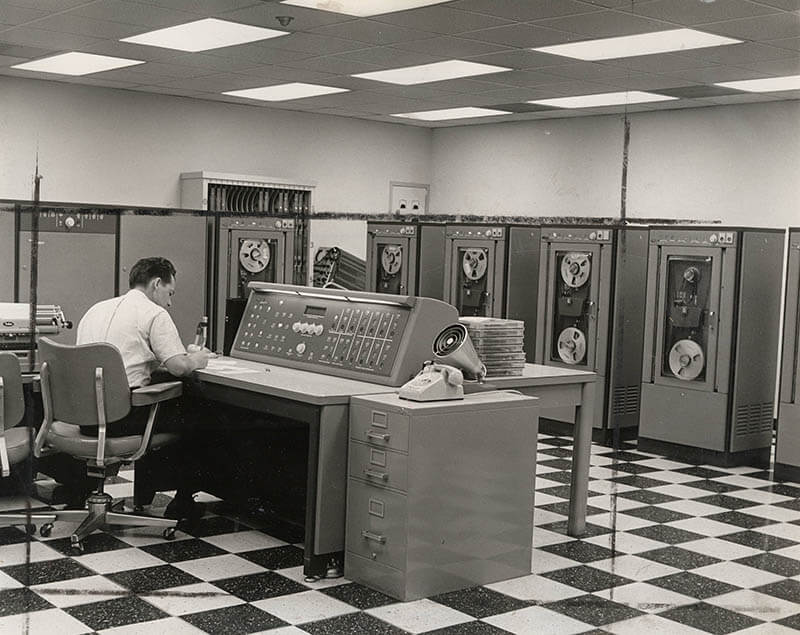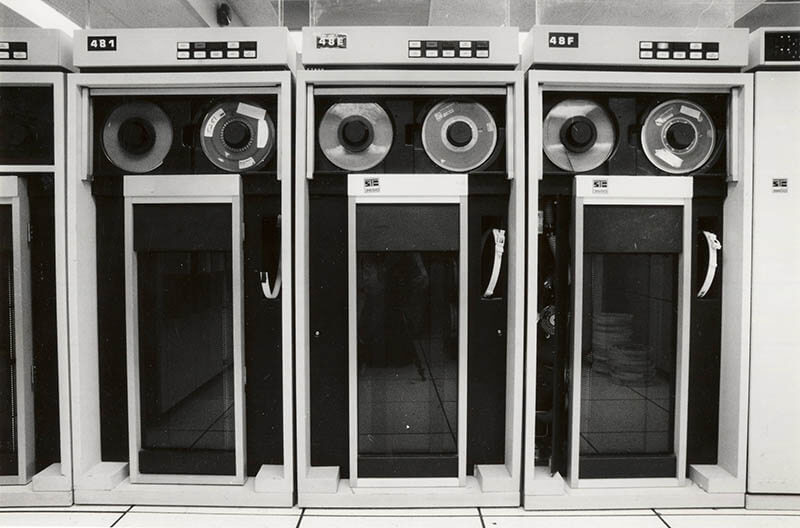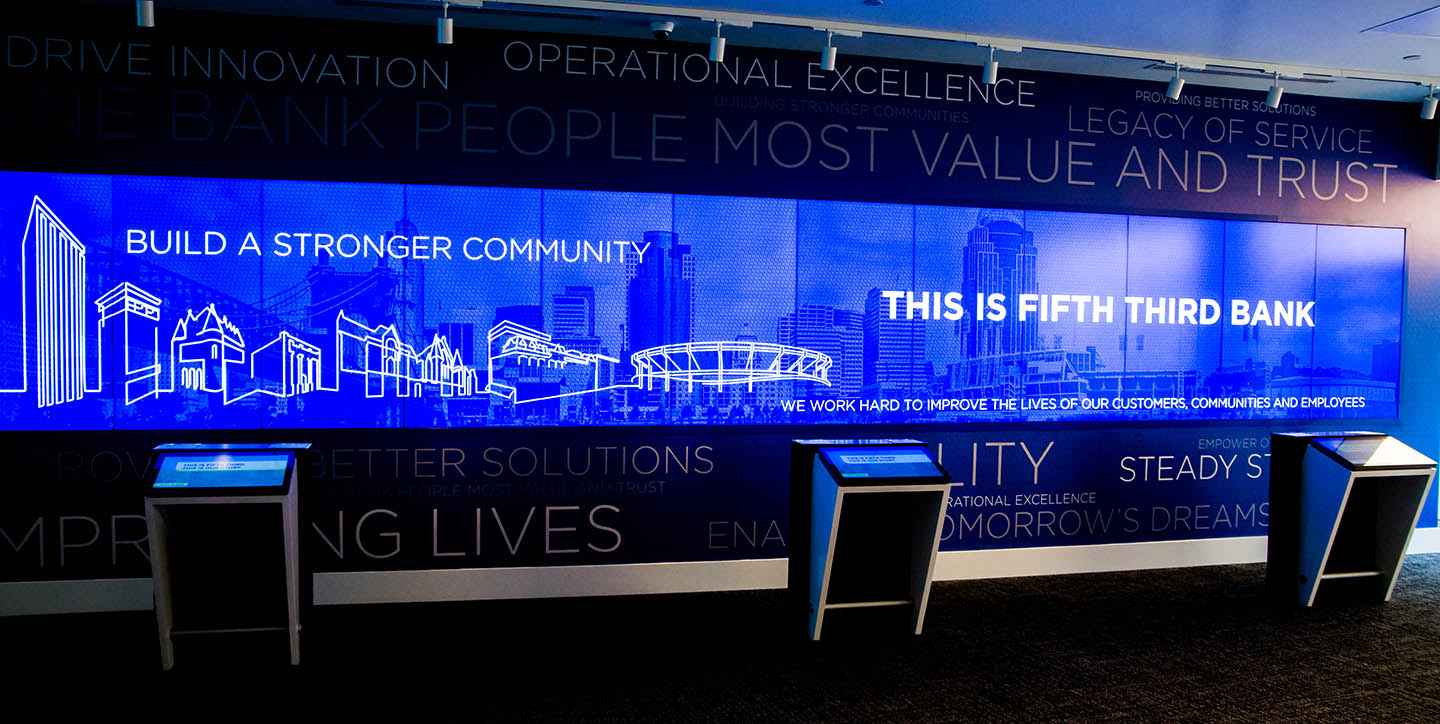
The Fifth Third Museum
Where we invest in history
Celebrating our shared heritage in Cincinnati
Since 1858, Fifth Third Bank has left an indelible signature on the people and places of Cincinnati. Now you can explore the bank’s rich heritage and legacy at the Fifth Third Bank Museum.
Explore how Fifth Third—and the city—have grown over the decades through events and connections that not only shaped the bank but also helped shape the Cincinnati community.
A snapshot of our innovations over the decades is available here.
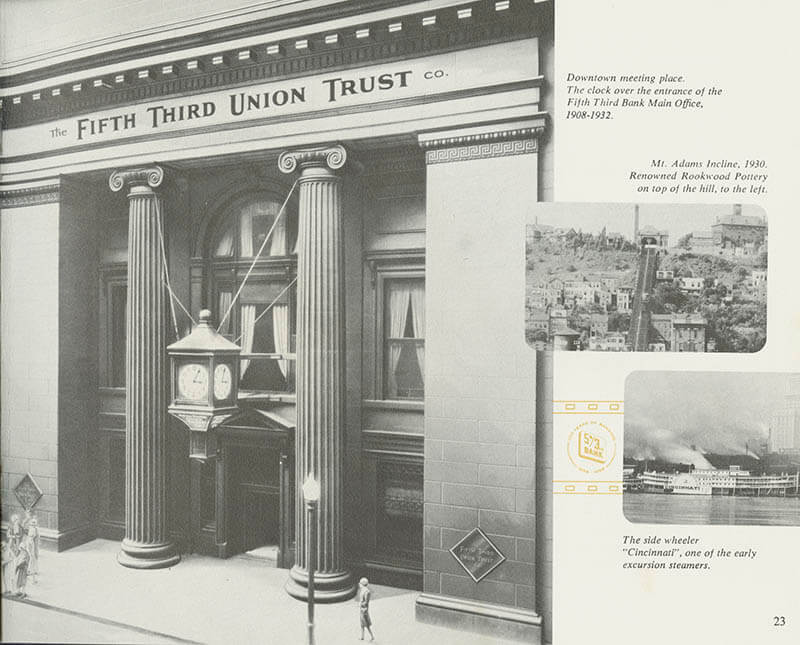
The Vault
Proud of Our Past. Inspired by Our Future.
On June 17, 2023, Fifth Third turned 165 years old. Watch a few scenes from our history that share our growth and innovation through the decades.
The Legacy of Jacob Schmidlapp
As both a banker and philanthropist, Jacob Schmidlapp left his mark on the people and places of Cincinnati, and his legacy continues to touch the lives of many today through the Schmidlapp Trusts.
WW2 History
Banks like Fifth Third Union Trust did their part during World War II to support soldiers on the frontlines and efforts on the homefront. See how Fifth Third supported its country and community.
How We Got Our Name
We’re often asked about our name. While a few legends exist over the origin of our name, watch here for the real story.
Current Exhibits
Our featured exhibits include:
The Rowe Family Legacy in Cincinnati Banking
Banking was a family affair for the Rowes, literally and figuratively. Four generations of this tight-knit family of bankers made thousands of Cincinnati’s customers, community organizations and citizens members of their extended family.
Their roots in Cincinnati’s financial industry began in the 1840s and continued through the Great Depression, two World Wars and numerous economic, political and social transformations in the Queen City and the country.
The Rowes, including the men who led Fifth Third and other banks as well as their family members, have left an indelible mark on Cincinnati’s history for 150 years—their mark continues to be visible today.
John J. Rowe often referred to the bank’s customers and employees as the "Fifth Third Family." It’s easy to see how true those words were as you explore this exhibit featuring unique artifacts and photographs from the Fifth Third Museum’s archive as well as the personal collection of Phillip C. Long, retired Fifth Third employee and a relative of the Rowe family. Long’s book, Titans of Cincinnati Finance: The Remarkable Civic Legacy of the Rowe Family, was an invaluable resource in the development of the exhibit.
Honoring Our Heroes
Melvin Schmidt started at Fifth Third as a mailroom clerk after he graduated from Hughes High School in the late 1930s. He volunteered for the Army Air Corps’ pilot training in 1942 but ended up qualifying as a radio operator. After training, he was assigned to the 703rd Heavy Bombardment Squadron of the 445th Bomb Group. The squadron flew B-24 Liberator bombers. Schmidt’s commanding officer was none other than Hollywood actor Jimmy Stewart. Schmidt was with the Squadron for his entire tour in the European Theater, flying dozens of bombing missions.
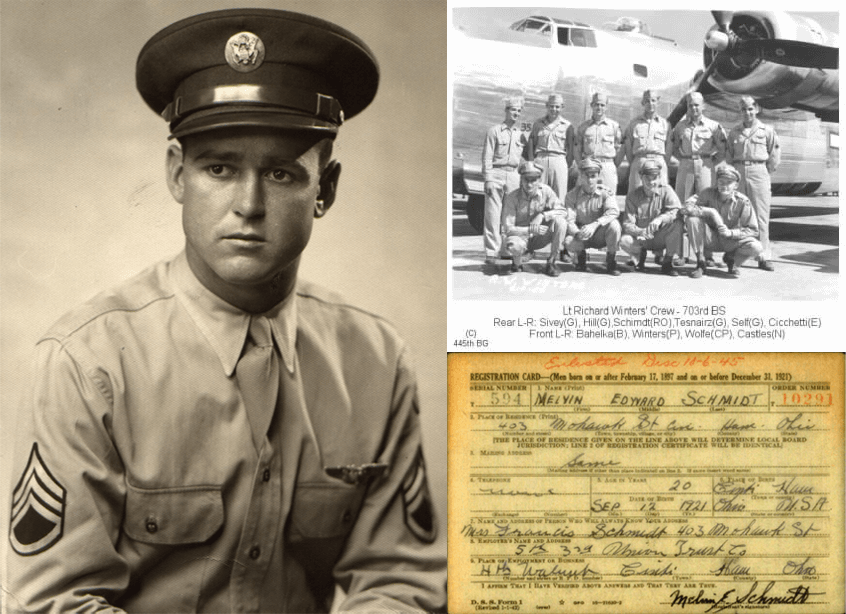
On March 3, 1945, disaster struck. While flying a mission to destroy the Rothensee Oil Refinery near Magdeburg, Germany, Schmidt’s aircraft (#44-48844) was struck twice by anti-aircraft fire two minutes out from its target and started breaking up. Out of the crew of ten men, only Schmidt, S/Sgt. Carl Goff (Waist-Gunner), Lt. Ira Castles (Navigator), and Lt. Matthew Bahelka (Bombardier) were able to bail out before the aircraft hit the ground. The survivors were taken as prisoners by the Germans and held for two months until the end of the war in May 1945. For his service, he received an American Campaign Medal, European-African-Middle Eastern Campaign Medal, Prisoner of War Medal, and a World War II Victory Medal.
After his release and eventual discharge, Schmidt returned home to his position at Fifth Third. He became an auditor and, in 1980, became the Audit Department’s Vice President. He retired in 1984. Schmidt was married to Marian Staud. They had three children. He died in 1995 at the age of 73 and is buried in Saint Joseph New Cemetery on the West Side of Cincinnati.
History Spotted Here
We're happy you spotted a historic object at your favorite Fifth Third branch or on the Signature Wall at the Fifth Third Museum. You can learn more about what you saw here.
History Spotted at our Branches
Fifth Third Museum Signature Wall
The Signature Wall features the signatures of more than 25 Fifth Third Bank presidents and other prominent Cincinnatians who not only helped shape Fifth Third Bank but also helped the city of Cincinnati prosper. A key to the signatures is located on the pillar in the middle of the museum.

Resources
The Fifth Third Museum archives contains a diverse mix of historic materials documenting the past and present of the bank, including physical objects, audio and visual media, periodicals, paintings, photographs and other bank documents. For research requests, please email us at FifthThirdMuseum@53.com. Please allow 3–5 days for a response.
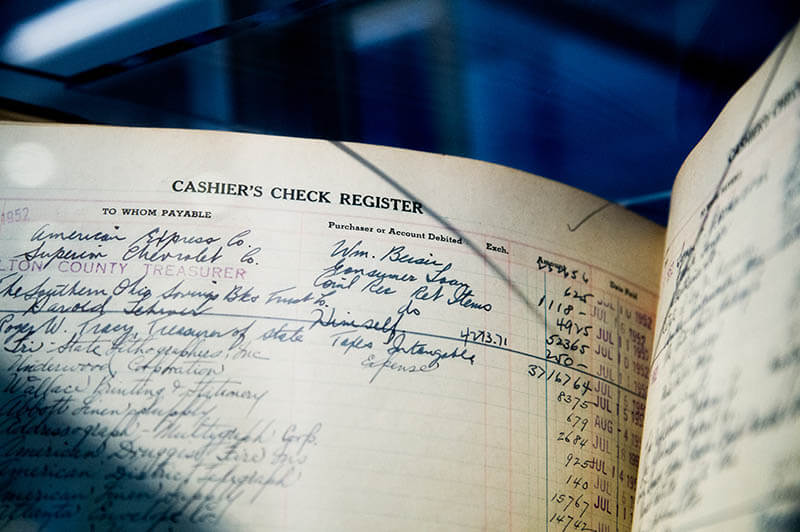
Visit Us
The Fifth Third Museum is free and open to the public.
Located At:
38 Fountain Square Plaza
Cincinnati, OH 45202
Hours
Monday–Thursday: 10 a.m.–3 p.m.
Friday: 10–2 p.m.
Closed Saturday and Sunday
To schedule group tours or appointments:
Call: 513-534-2501
Email: FifthThirdMuseum@53.com
